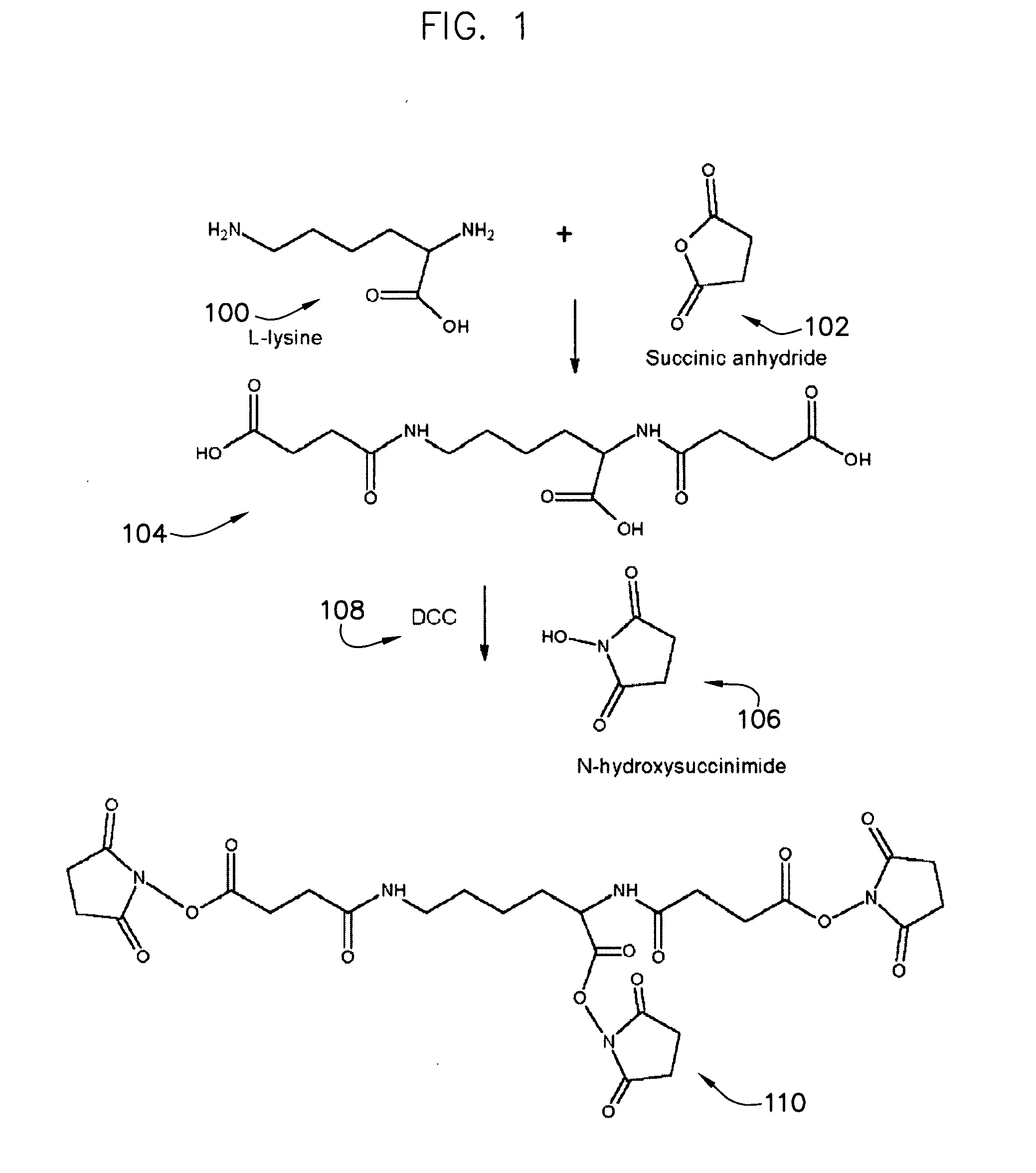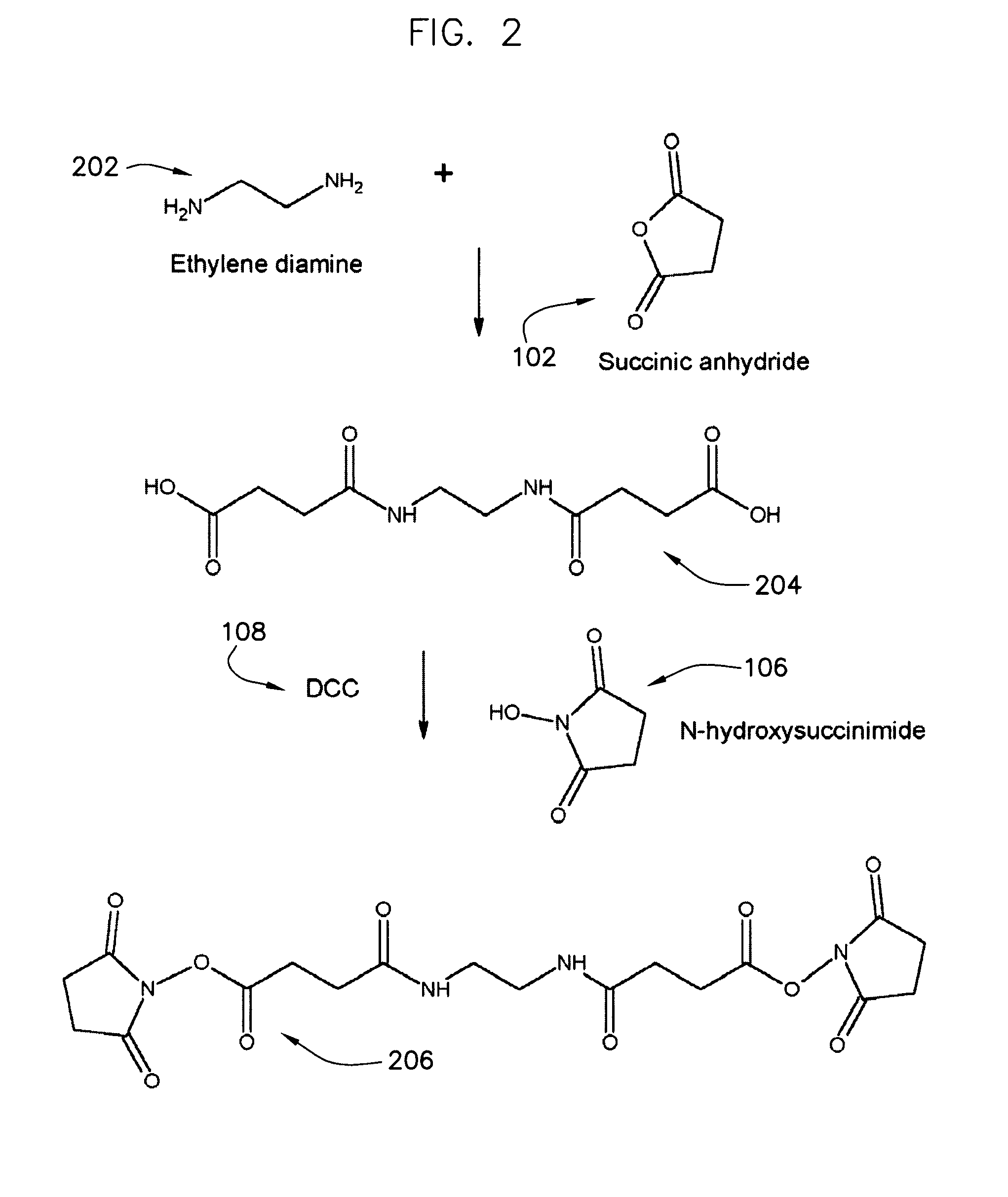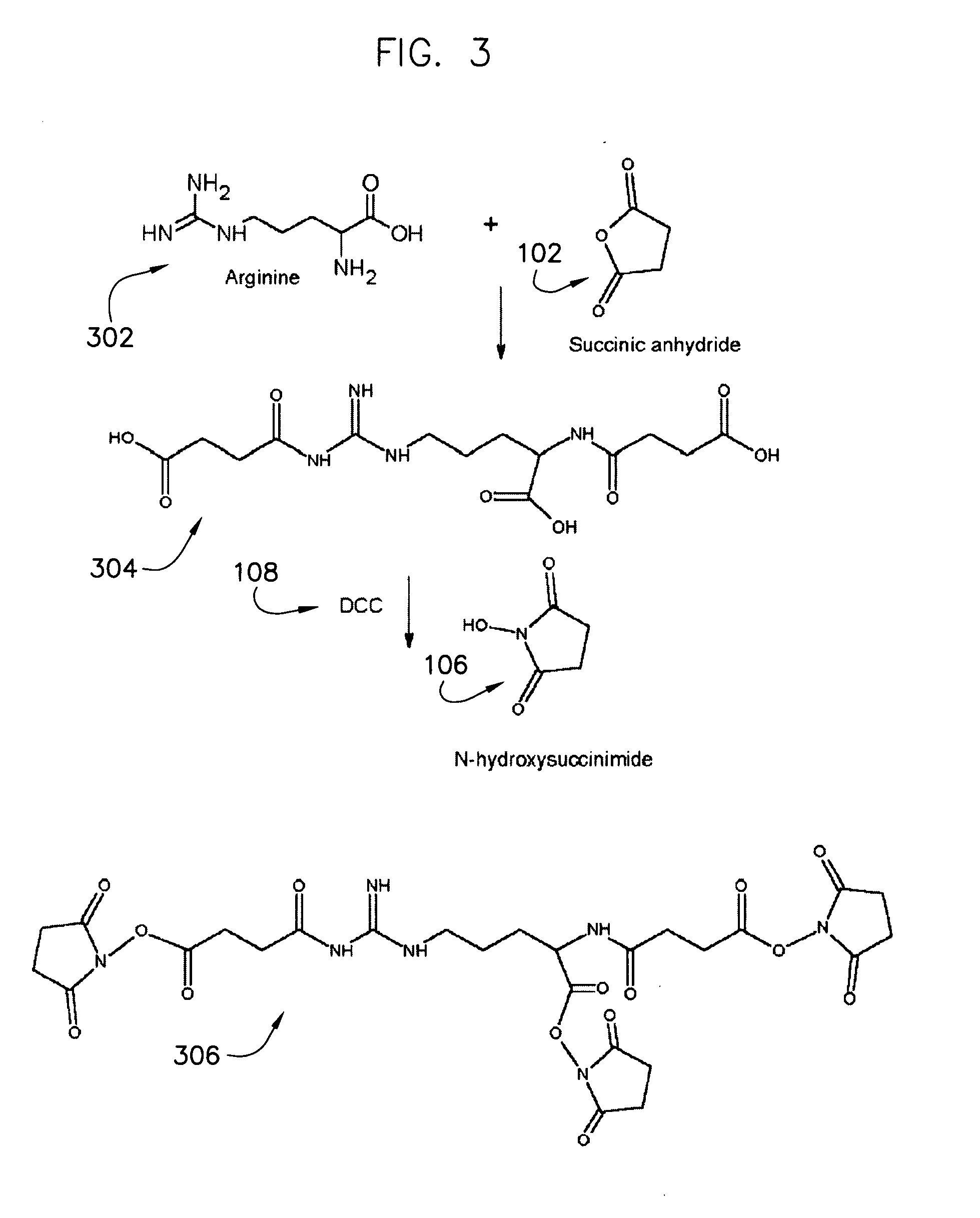Protein crosslinkers, crosslinking methods and applications thereof
a crosslinker and protein technology, applied in the field of biomaterials, can solve the problems of inability to rapidly dissolve, inability to achieve rapid dissolution, and inability to achieve the final protein concentration,
- Summary
- Abstract
- Description
- Claims
- Application Information
AI Technical Summary
Benefits of technology
Problems solved by technology
Method used
Image
Examples
example 1
Synthesis of Polyvinyl Pyrrolidinone Based Crosslinker
Synthesis of N-hydroxysuccinimide (NHS) ester of poly(vinyl pyrrolidinone-co-acrylic acid) copolymer (PVPPANHS)
[0108]1 g poly(vinyl pyrrolidinone-co-acrylic acid) copolymer (Aldrich, Catalog number 41,852-8) and 0.4 g of N-hydroxysuccinimide were transferred to 100 ml round bottom flask. The mixture was dissolved in 10 ml dry dimethyleformamide (DMF). The solution was then cooled to 0 0 C using ice bath. 0.72 g of N,N-dicyclohexylcarbodiimide (DCC) dissolved in 5 ml dry DMF was added to the reaction mixture dropwise. The reaction mixture was kept at 0 0 C for 2 h and then at room temperature for 12 to 24 h . The reaction mixture was protected from moisture during the entire work up. At the end of the reaction, the precipitated dicyclohexylurea was removed by filtration. The filtrate was then added to 200-500 ml diethyl ether. The precipitated polymer was recovered by decantation or filtration. The product, a thick viscous liquid,...
example 2
Synthesis of Low Molecular Weight Tetrafunctional Crosslinker (Water Insoluble)
Synthesis of N-hydroxysuccinimide ester of 1,2,3,4-butanedicarboxylic acid (BTANHS)
[0109]In 100 ml round bottom flask, 1.0 gram 1,2,3,4-butanedicarboxylic acid, 2.0 g N-hydroxysuccinimide and 10 ml tetrahydrofuran (THF) were added and the flask was cooled 0° C. using ice bath. 3.5 g N,N-dicyclohexylcarbodiimide dissolved in 5 ml THF were added while stirring. The reaction mixture was stirred at 0 0 C for 2-4 h and then at room temperature overnight. The precipitated dicyclohexylurea was removed by filtration and the solution was concentrated by removing the solvent. The crude light yellow solid product was purified by recrystallization. The IR spectrum showed imide carbonyl at 1780 cm-1 and cyclic C—N at 1380 cm-1.
example 3
Synthesis of Liquid Crosslinker
Synthesis of poly(ethylene glycol) N-hydroxysuccinimide ester(PEGNHS)
[0110]In 100 ml round bottom flask, 2 gram polyethylene glycol 600 diacid (Fluka, catalog 81324), 0.8 g N-hydroxysuccinimide and 10 ml methylene chloride were added and the flask was cooled 0 C using ice bath. 1.4 g N,N-dicyclohexylcarbodiimide dissolved in 5 ml methylene chloride was added while stirring. The reaction mixture was stirred at 0 C for 2-4 h and then at room temperature overnight. The precipitated dicyclohexylurea was removed by filtration and the solution was concentrated by removing the solvent. The crude light yellow liquid product was purified by washing with 10 ml diethyl ether. The IR spectrum showed imide carbonyl at 1780 cm-1 and cyclic C—N at 1380 cm-1.
PUM
| Property | Measurement | Unit |
|---|---|---|
| Temperature | aaaaa | aaaaa |
| Temperature | aaaaa | aaaaa |
| Time | aaaaa | aaaaa |
Abstract
Description
Claims
Application Information
 Login to View More
Login to View More - R&D
- Intellectual Property
- Life Sciences
- Materials
- Tech Scout
- Unparalleled Data Quality
- Higher Quality Content
- 60% Fewer Hallucinations
Browse by: Latest US Patents, China's latest patents, Technical Efficacy Thesaurus, Application Domain, Technology Topic, Popular Technical Reports.
© 2025 PatSnap. All rights reserved.Legal|Privacy policy|Modern Slavery Act Transparency Statement|Sitemap|About US| Contact US: help@patsnap.com



